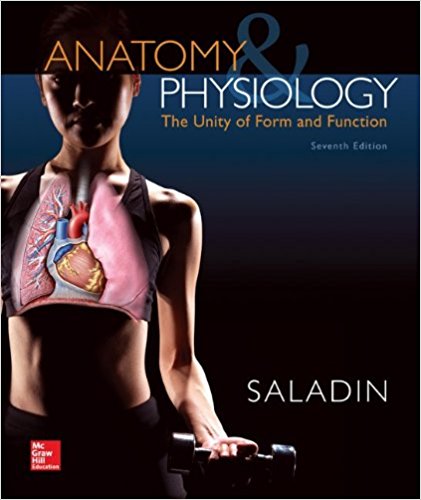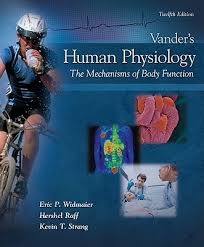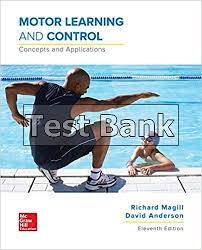Test Bank For Anatomy & Physiology The Unity Of form and Function 7th Edition by Kenneth S. Saladin
Original price was: $55.00.$22.00Current price is: $22.00.
Test Bank For Anatomy & Physiology The Unity Of form and Function 7th Edition by Kenneth S. Saladin will help you to remember all of the critical information that is needed to do well on your upcoming exam. This Test Bank will provide you with questions that mirror those found on the real test, as well as the correct answers.
In addition, the Test Bank will offer explanations for each answer, giving you a deeper understanding of the material. With the Test Bank at your side, you can be confident that you will be fully prepared for anything that comes your way on test day. So don’t wait any longer, get started today!
Digital item No Waiting Time Instant Download
ISBN-13: 978-0073403717 ISBN-10: 0073403717
Description
Test Bank For Anatomy & Physiology The Unity Of form and Function 7th Edition by Kenneth S. Saladin
Chapter 01 Major Themes of Anatomy and Physiology Answer Key
True / False Questions
|
1. |
Sometimes anatomical terms come from origins that do not lend any insight into their meaning. TRUE |
|
Accessibility: Keyboard Navigation |
|
2. |
Feeling for swollen lymph nodes is an example of auscultation. FALSE |
|
Accessibility: Keyboard Navigation |
|
3. |
We can see through bones with magnetic resonance imaging (MRI). TRUE |
|
Accessibility: Keyboard Navigation |
|
4. |
Histology is the study of structures that can be observed without a magnifying lens. FALSE |
|
Accessibility: Keyboard Navigation |
|
5. |
Cells were first named by microscopist Robert Hooke. TRUE |
|
Accessibility: Keyboard Navigation |
|
6. |
All functions of the body can be interpreted as the effects of cellular activity. TRUE |
|
Accessibility: Keyboard Navigation |
|
7. |
The hypothetico-deductive method is common in physiology, whereas the inductive method is common in anatomy. TRUE |
|
Accessibility: Keyboard Navigation |
|
8. |
An individual scientific fact has more information than a theory. FALSE |
|
Accessibility: Keyboard Navigation |
|
9. |
Evolutionary (Darwinian) medicine traces some of our diseases to our evolutionary past. TRUE |
|
Accessibility: Keyboard Navigation |
|
10. |
The terms development and evolution have the same meaning in physiology. FALSE |
|
Accessibility: Keyboard Navigation |
|
11. |
Organs are made of tissues. TRUE |
|
Accessibility: Keyboard Navigation |
|
12. |
A molecule of water is more complex than a mitochondrion (organelle). FALSE |
|
Accessibility: Keyboard Navigation |
|
13. |
Homeostasis and occupying space are both unique characteristics of living things. FALSE |
|
Accessibility: Keyboard Navigation |
|
14. |
Positive feedback helps to restore normal function when one of the body’s physiological variables gets out of balance. FALSE |
|
Accessibility: Keyboard Navigation |
|
15. |
Negative feedback is a self-amplifying chain of events that tends to produce rapid change in the body. FALSE |
|
Accessibility: Keyboard Navigation |
|
16. |
Anatomists around the world adhere to a lexicon of standard international terms, which stipulates both Latin names and accepted English equivalents. TRUE |
|
Accessibility: Keyboard Navigation |
Multiple Choice Questions
|
17. |
Feeling structures with your fingertips is called _________, whereas tapping on the body and listening for sounds of abnormalities is called ____________. A. palpation; auscultation B. auscultation; percussion C. percussion; auscultation D. palpation; percussion E. percussion; palpation |
|
Accessibility: Keyboard Navigation |
|
18. |
Known as “the father of modern anatomy,” __________ was the first to publish accurate drawings of the body. A. Vesalius B. Maimonides C. Harvey D. Aristotle E. van Leeuwenhoek |
|
Accessibility: Keyboard Navigation |
|
19. |
The most influential medical textbook of the ancient era was written by __________. A. Hippocrates B. Aristotle C. Galen D. Vesalius E. Avicenna |
|
Accessibility: Keyboard Navigation |
|
20. |
Which of these is the best imaging technique for routinely examining the anatomical development of a fetus? A. Auscultation B. PET scan C. MRI D. Sonography E. Radiography |





Be the first to review “Test Bank For Anatomy & Physiology The Unity Of form and Function 7th Edition by Kenneth S. Saladin”